Photos: Ancient Sundial-Moondial Discovered
A 12th-century slab with carvings that indicate the position of the sun and moon in the sky throughout the year has been discovered in Russia. A ring of wells in the sundial-moondial corresponds to sunrises during the equinoxes and solstices, the scientists found. Check out these images of the astronomical artifact, courtesy of Vodolazhsky D.I., 2014.
Tracking the sun
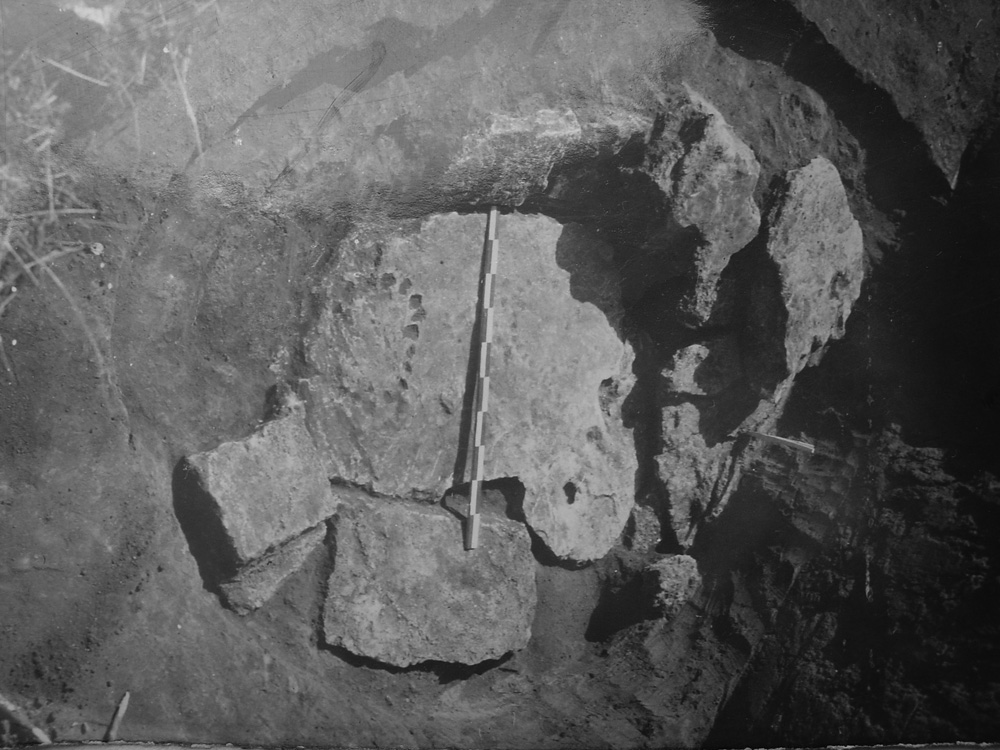
A combination sundial and moondial found near Rostov, Russia dates back to the Bronze Age, probably around the 12th century B.C. This artifact was found in 1991, marking the grave of a man in his 50s. No one knew its exact purpose, but a new study finds that the markings correspond with positions of the sun and moon in the sky throughout the year. (Photo Credit: Larenok P.A.)
Round of wells
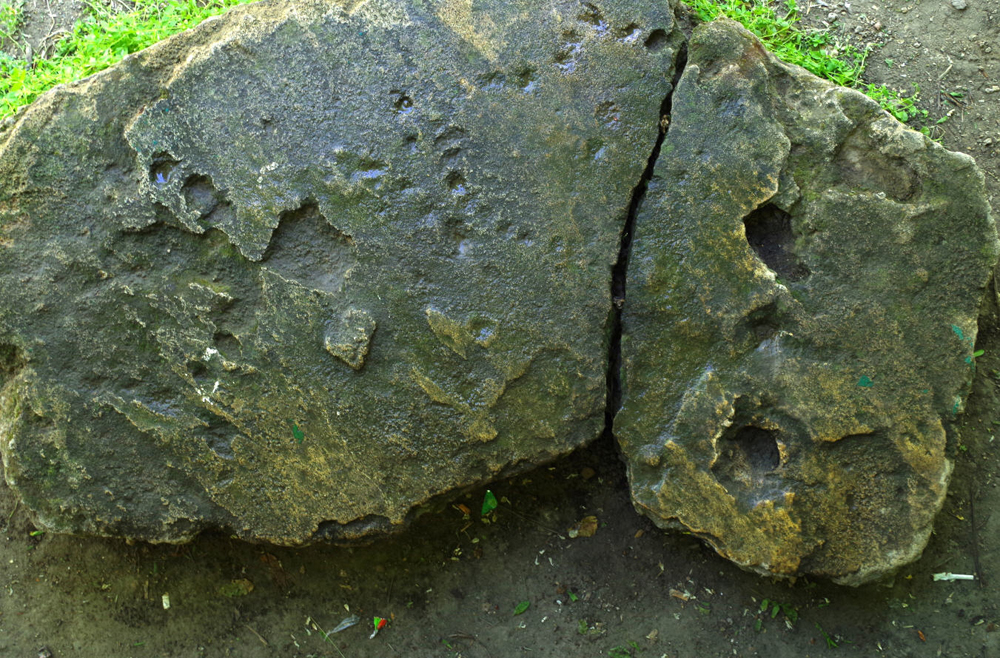
Carved "wells" are arranged in a 0.9-foot (0.3 meters) diameter circle. An astronomical study finds that these wells correspond with sunrises at the equinoxes, the days of the year when day and night are equal in length, and at solstices, the days of the year when day or night are at their longest.
Bronze Age sundial
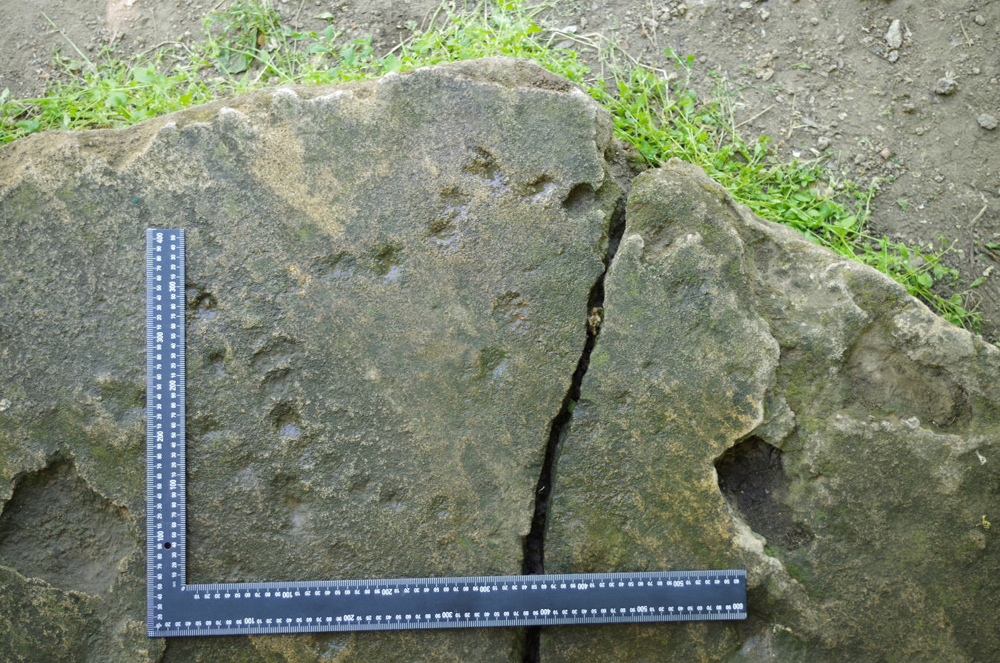
A close look at the circular carvings on the Bronze Age sundial. This artifact dates back to approximately the 12th century B.C., similar in age to another complex sundial found in Ukraine, and on par with sundials found in ancient Egypt. Researchers are unsure of whether traders between ancient Egypt and the Black Sea region brought these technologies to and fro between the two locations.
Sign up for the Live Science daily newsletter now
Get the world’s most fascinating discoveries delivered straight to your inbox.
Lunar movement
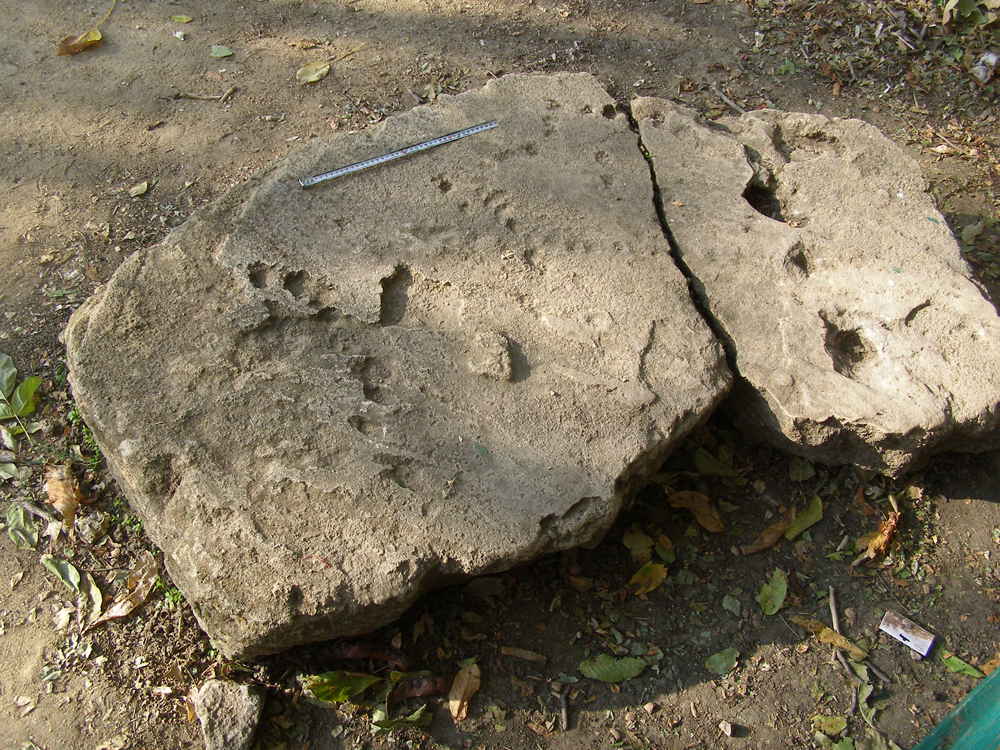
The carved "wells" in the sundial don't only track the motion of the sun. Several of the wells correspond with lunar movement across the sky. These carvings indicate an 18.6-year lunar cycle, during which the moonrise shifts from southerly to northerly and the moon's path across the sky appears to change from high to low.
Rostov slab
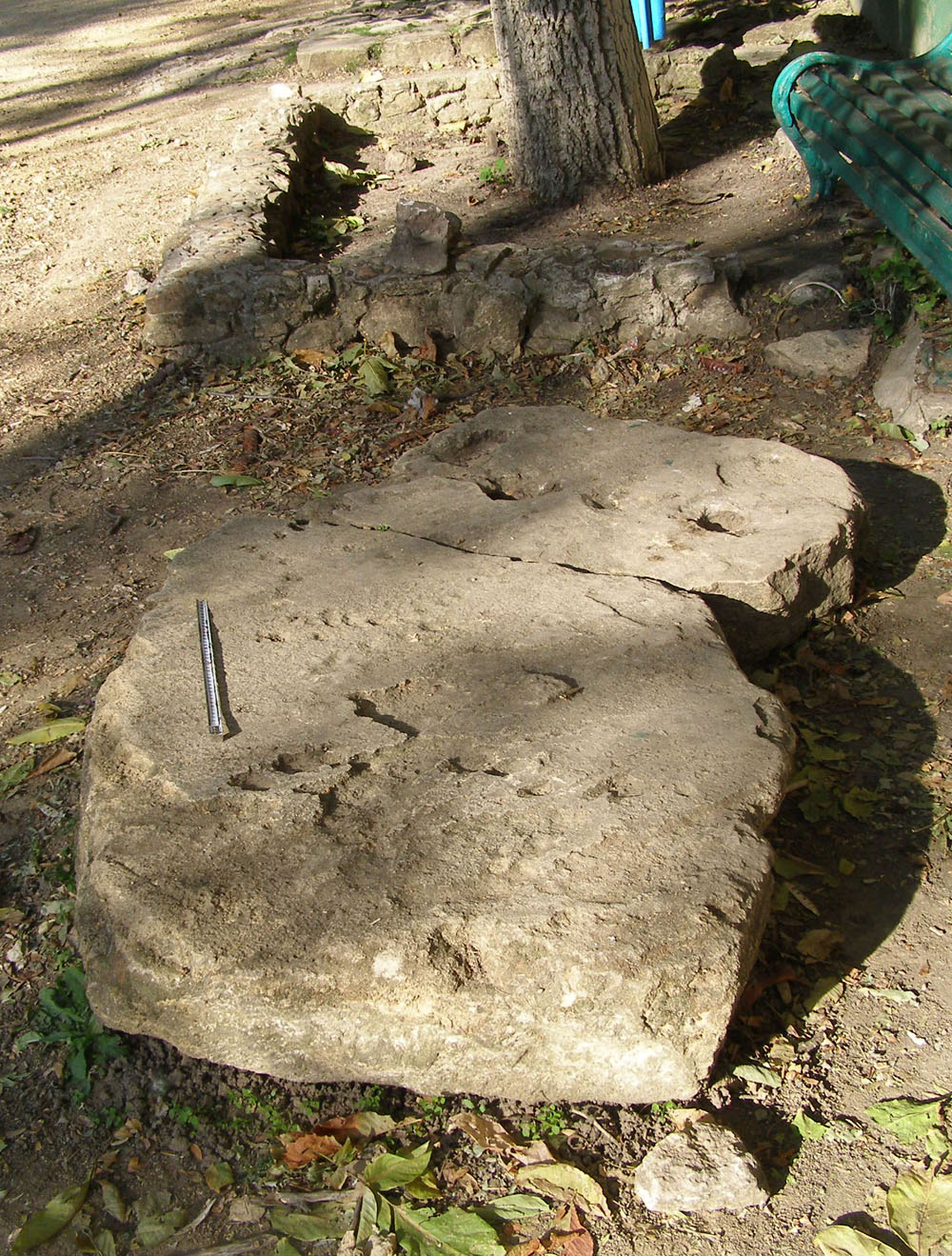
The Rostov slab remained in a collection at the Tanais archaeological museum in Russia for decades before anyone analyzed its carvings. The creators of this sundial were members of the Srubna culture, who lived on the steppes between the Ural Mountains and the Dneiper River. The Srubna people may have used this sundial and others like it to schedule rituals and work, or it may have been a research tool created by an ancient scientist curious about the heavens, study researcher Larisa Vodolazhskaya of the Archaeoastronomical Research Center at Southern Federal University in Russia told Live Science.
Inside a grave
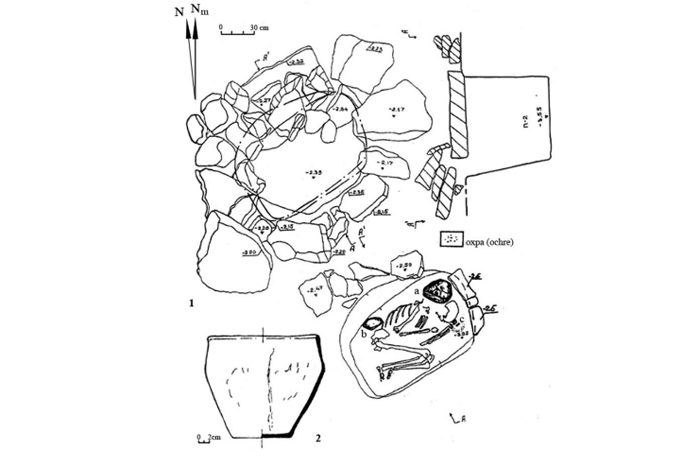
A diagram shows the Bronze Age grave where the Rostov sundial slab was discovered. The grave belonged to a man of about 50 years old, who was buried with several vessels and irregularly shaped stones.
Equinox
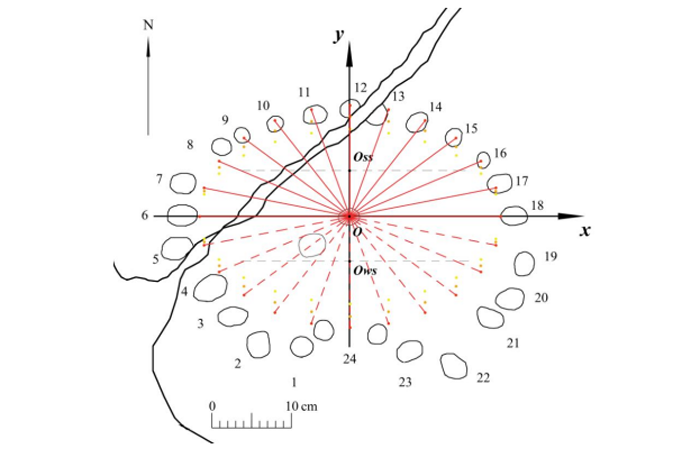
This diagram shows how the carvings on the Rostov slab could be used to track the time on the equinox. The slab was an analemmatic sundial. In an analemmatic sundial, the gnomon, or shadow-casting piece of the sundial, is moved throughout the year. This image shows the placement of the gnomon on the equinox and the corresponding hour markets.
Tracking time
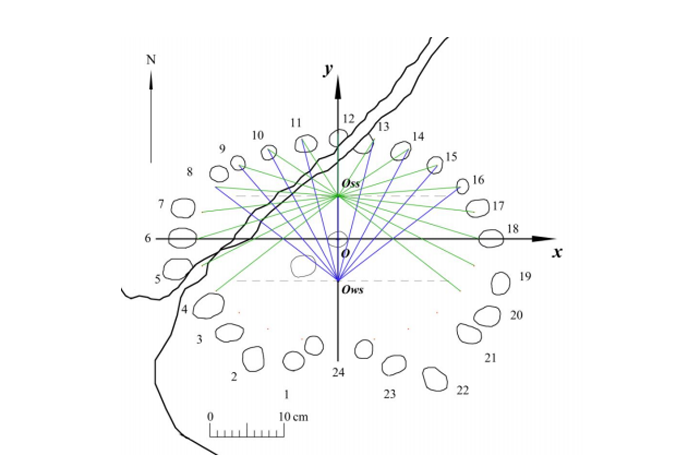
By moving the gnomon, ancient astronomers could track the correct time over the entire year, regardless of the sun's position in the sky. The green lines represent the gnomon position and hour lines during the summer solstice. The run lines represent the gnomon position and hour lines during the winter solstice.
Moonrise positions
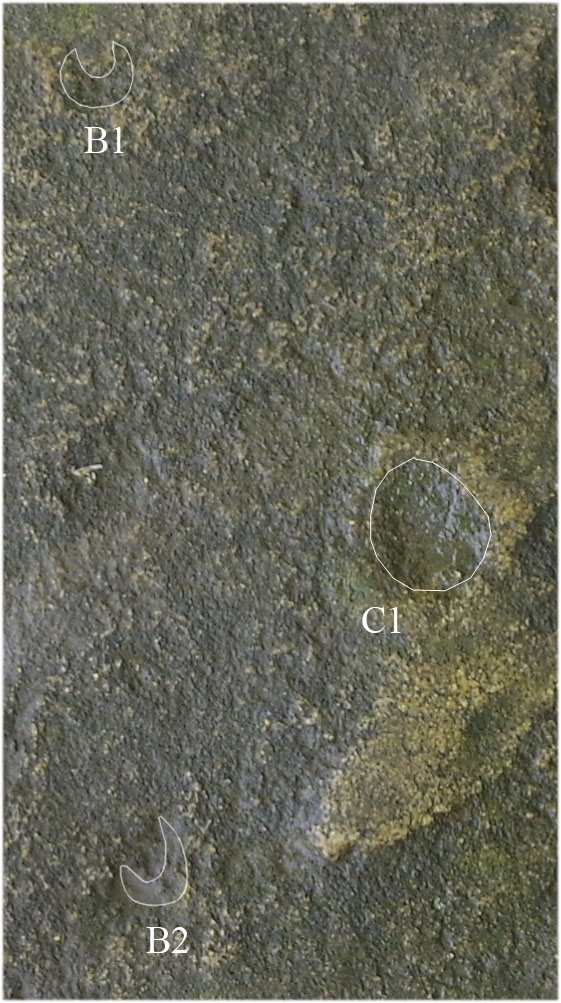
Some of the wells in the Rostov slab don't correspond to solar movements. Instead, they track the motion of the moon. Crescent-shaped B1 and B2 represent the positions of the moonrise of the so-called "high moon," a point in the lunar cycle where the moon reaches its highest path in the sky. Round C1 points to moonrises of the "low moon," the point in the cycle where the moon's path is closest to the horizon.
High moon
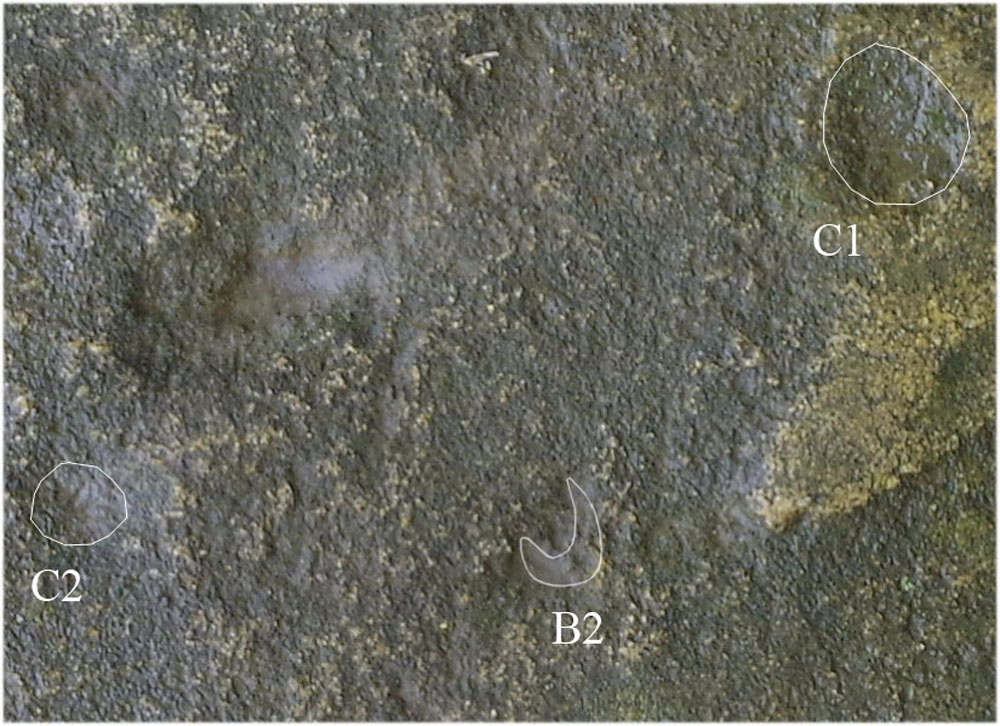
A close view of the moon markings on the Rostov slab. C1 and C2 are made to mark moonrises of the low moon, a portion of an 18.6-year-long lunar cycle when the moon travels at its lowest point across the sky. Crescent-shaped B2 represents the "high moon" portion of the lunar cycle.
Low moon
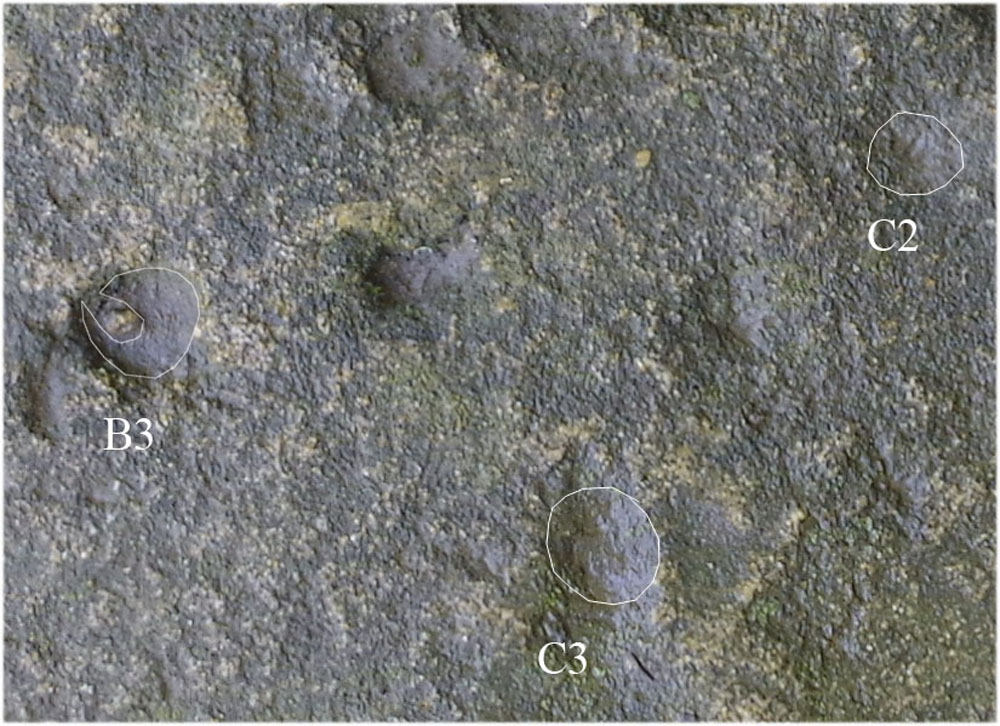
Here, B3 indicates the moonrise during the "high moon" portion of the lunar cycle, while C2 and C3 indicate moonrises during the "low moon" part of the cycle. Archaeologists theorize that this slab could have been a stepping stone to more sophisticated astronomical tools, like the famous Antikythera mechanism, an instrument found in a Mediterranean shipwreck that was developed sometime between 150 B.C. and 100 B.C.
High moonrise
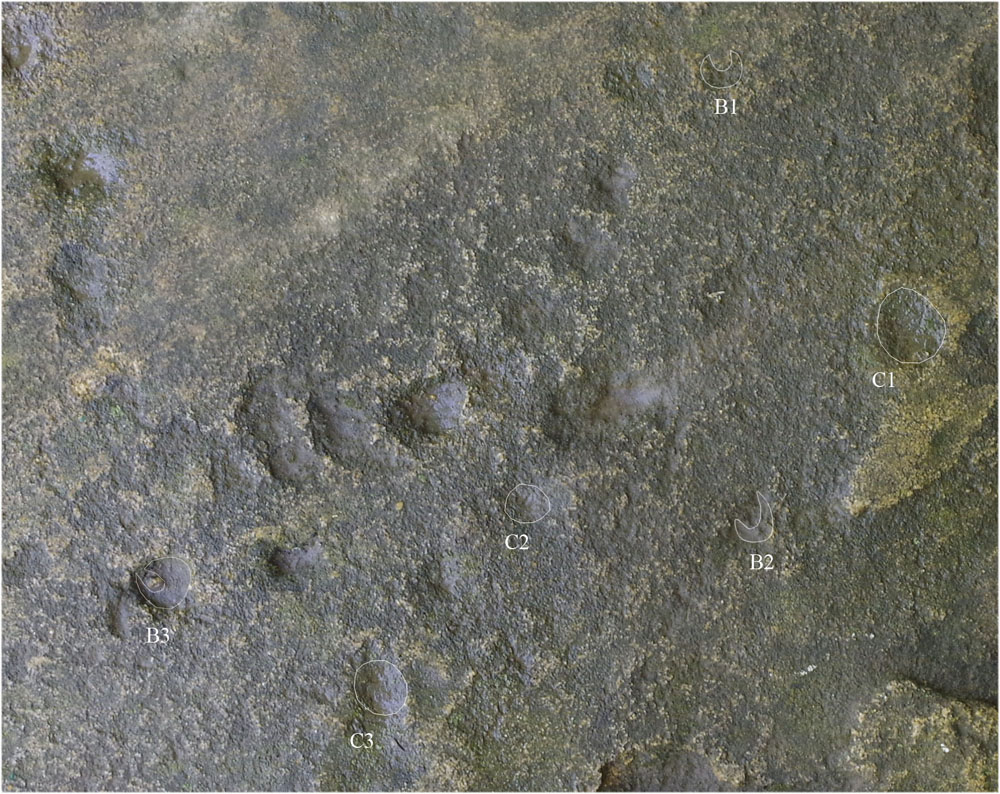
All of the moon markings on the Rostov slab. B1, B2 and B3, all crescent-shaped, represent portions of the "high moon" lunar cycle, when the moon travels its highest path across the sky: the northernmost high moonrise, the southernmost high moon rise, and the high moonrise on the day of the equinox. Round C1, C2 and C3 represent moonrises during the part of the lunar cycle when the moon appears to travel closest to the horizon: northernmost low moon rise, southernmonst low moon rise, and the low moon rise on the equinox.
Editor's Note: If you have an amazing nature or general science photo you'd like to share for a possible story or image gallery, please contact managing editor Jeanna Bryner at LSphotos@livescience.com.
Follow Stephanie Pappas on Twitter and Google+. Follow us @livescience, Facebook & Google+.

Stephanie Pappas is a contributing writer for Live Science, covering topics ranging from geoscience to archaeology to the human brain and behavior. She was previously a senior writer for Live Science but is now a freelancer based in Denver, Colorado, and regularly contributes to Scientific American and The Monitor, the monthly magazine of the American Psychological Association. Stephanie received a bachelor's degree in psychology from the University of South Carolina and a graduate certificate in science communication from the University of California, Santa Cruz.










